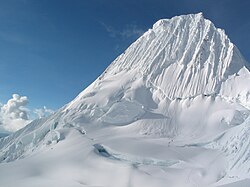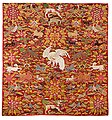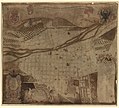Introduction
Peru, officially the Republic of Peru, is a country in western South America. It is bordered in the north by Ecuador and Colombia, in the east by Brazil, in the southeast by Bolivia, in the south by Chile, and in the south and west by the Pacific Ocean. Peru is a megadiverse country, with habitats ranging from the arid plains of the Pacific coastal region in the west, to the peaks of the Andes mountains extending from the north to the southeast of the country, to the tropical Amazon basin rainforest in the east with the Amazon River. Peru has a population of over 32 million, and its capital and largest city is Lima. At 1,285,216 km2 (496,225 sq mi), Peru is the 19th largest country in the world, and the third largest in South America. Peruvian territory was home to several cultures during the ancient and medieval periods, and has one of the longest histories of civilization of any country, tracing its heritage back to the 10th millennium BCE. Notable pre-colonial cultures and civilizations include the Caral–Supe civilization (the earliest civilization in the Americas and considered one of the cradles of civilization), the Nazca culture, the Wari and Tiwanaku empires, the Kingdom of Cusco, and the Inca Empire, the largest known state in the pre-Columbian Americas. The Spanish Empire conquered the region in the 16th century and Charles V established a viceroyalty with the official name of the Kingdom of Peru that encompassed most of its South American territories, with its capital in Lima. Higher education started in the Americas with the official establishment of the National University of San Marcos in Lima in 1551. Peru's population includes Mestizos, Amerindians, Europeans, Africans and Asians. The main spoken language is Spanish, although a significant number of Peruvians speak Quechuan languages, Aymara, or other Indigenous languages. This mixture of cultural traditions has resulted in a wide diversity of expressions in fields such as art, cuisine, literature, and music. (Full article...) Entries here consist of Good and Featured articles, which meet a core set of high editorial standards.
Ubinas is an active stratovolcano in the Moquegua Region of southern Peru, approximately 60 kilometres (37 mi) east of the city of Arequipa. Part of the Central Volcanic Zone of the Andes, it rises 5,672 metres (18,609 ft) above sea level. The volcano's summit is cut by a 1.4-kilometre-wide (0.87 mi) and 150-metre-deep (490 ft) caldera, which itself contains a smaller crater. Below the summit, Ubinas has the shape of an upwards-steepening cone with a prominent notch on the southern side. The gently sloping lower part of the volcano is also known as Ubinas I and the steeper upper part as Ubinas II; they represent different stages in the volcano's geological history. The most active volcano in Peru, Ubinas has a history of small to moderate explosive eruptions as well as a few larger eruptions, such as in 1667, along with persistent degassing and ash emissions. Activity at the volcano began in the Pleistocene epoch, and led to the growth of the current mountain in two phases. Among the recent eruptions was the 2006–2007 event, which produced eruption columns and led to ash fall in the region, resulting in health issues and evacuations. During the most recent activity, from 2013 to 2017, a lava flow formed inside the crater, and further ash falls led to renewed evacuations of surrounding towns. Ubinas is monitored by the Peruvian geological service INGEMMET, which has published a volcano hazard map for Ubinas and regular volcanic activity reports. (Full article...) Selected image Photo credit: RedWolf
Alpamayo (Spanish: Nevado Alpamayo) is one of the most conspicuous peaks in the Cordillera Blanca mountain range of the Peruvian Andes. It is a steep (sixty degrees), almost perfect pyramid of ice, one of a number of peaks that compose the Santa Cruz massif, the northernmost massif of the Cordillera Blanca. Although smaller than many of its neighboring peaks, it is distinguished by its unusual formation and overwhelming beauty. It actually has two sharp summits, North and South, separated by a narrow corniced ridge. (more...) Selected battleThe Cenepa War (January 26 – February 28, 1995), also known as the Alto Cenepa War, was a brief and localized military conflict between Ecuador and Peru, fought over control of a disputed area on the border between the two countries. The indecisive outcome of the conflict — with both sides claiming victory — along with the mediation efforts of the United States of America, Brazil, Argentina, and Chile, paved the way for the opening of diplomatic negotiations that ultimately led to the signing of a definitive peace agreement in 1998, putting an end to one of the longest territorial disputes in the Western Hemisphere. (more...) In this month
General imagesThe following are images from various Peru-related articles on Wikipedia.
Selected article -Inés Melchor (born August 30, 1986) is a Peruvian long-distance runner. She competed in the marathon at the 2012 Summer Olympics, placing 25th with a time of 2:28:54. In September 2014 she placed 8th at the Berlin Marathon with a time of 2:26.48, new Peruvian national record and the South America area record. Melchor also holds Peruvian records for the 5000 and 10,000 metres on the track. She won numerous youth and junior medals at the continental level and competed at the 2003 World Championships in Athletics and the 2004 Summer Olympics while still a teenager. She won a gold medal double in the 5000 m and 10,000 m at the 2009 South American Championships in Athletics. She also won the bronze medal in the 5000 m at the 2011 Pan American Games. She is a three-time champion at the South American Cross Country Championships. (Full article...) Did you know (auto-generated) -
CategoriesRelated portalsSelected quote -
Peruvian writer, politician, journalist, and essayist Jorge Mario Pedro Vargas Llosa in The War of the End of the World
Basic facts & figuresMore did you know...
Peru TopicsRecognized content
|
|||||||||||||||






























